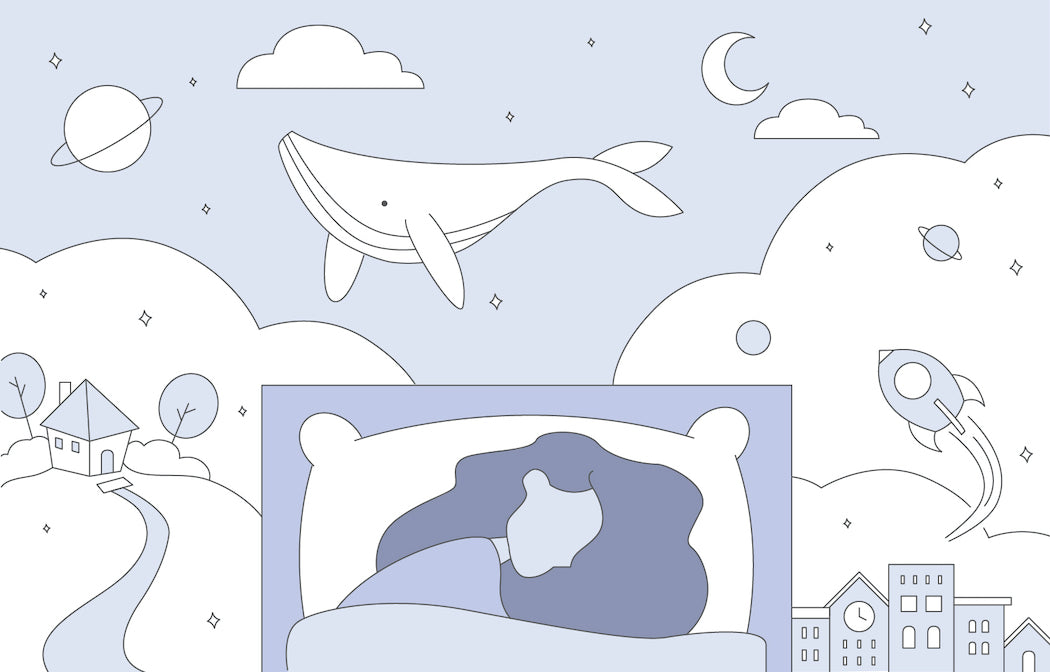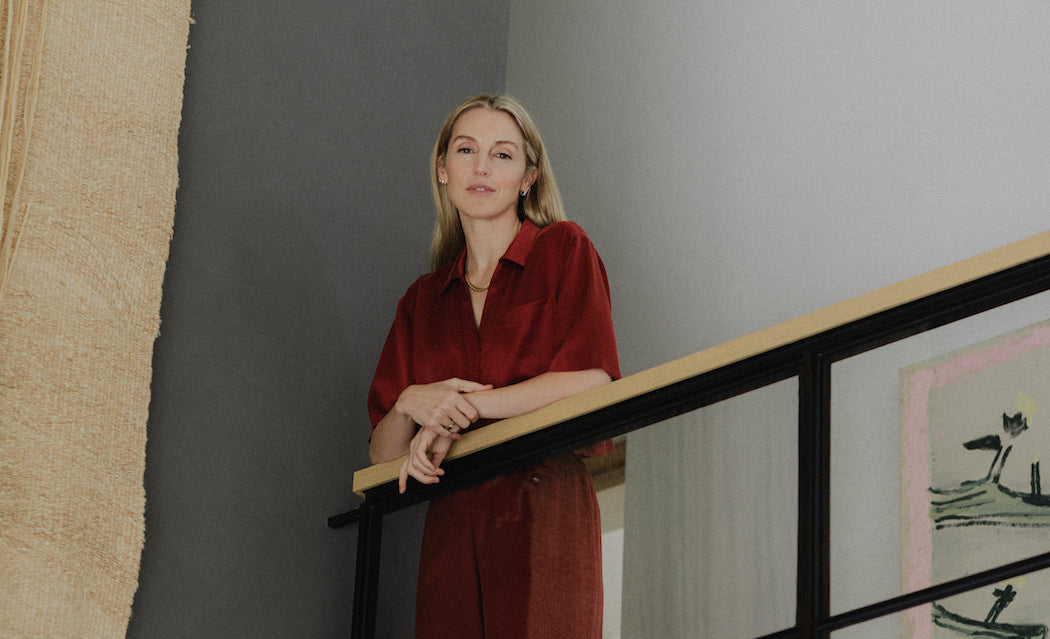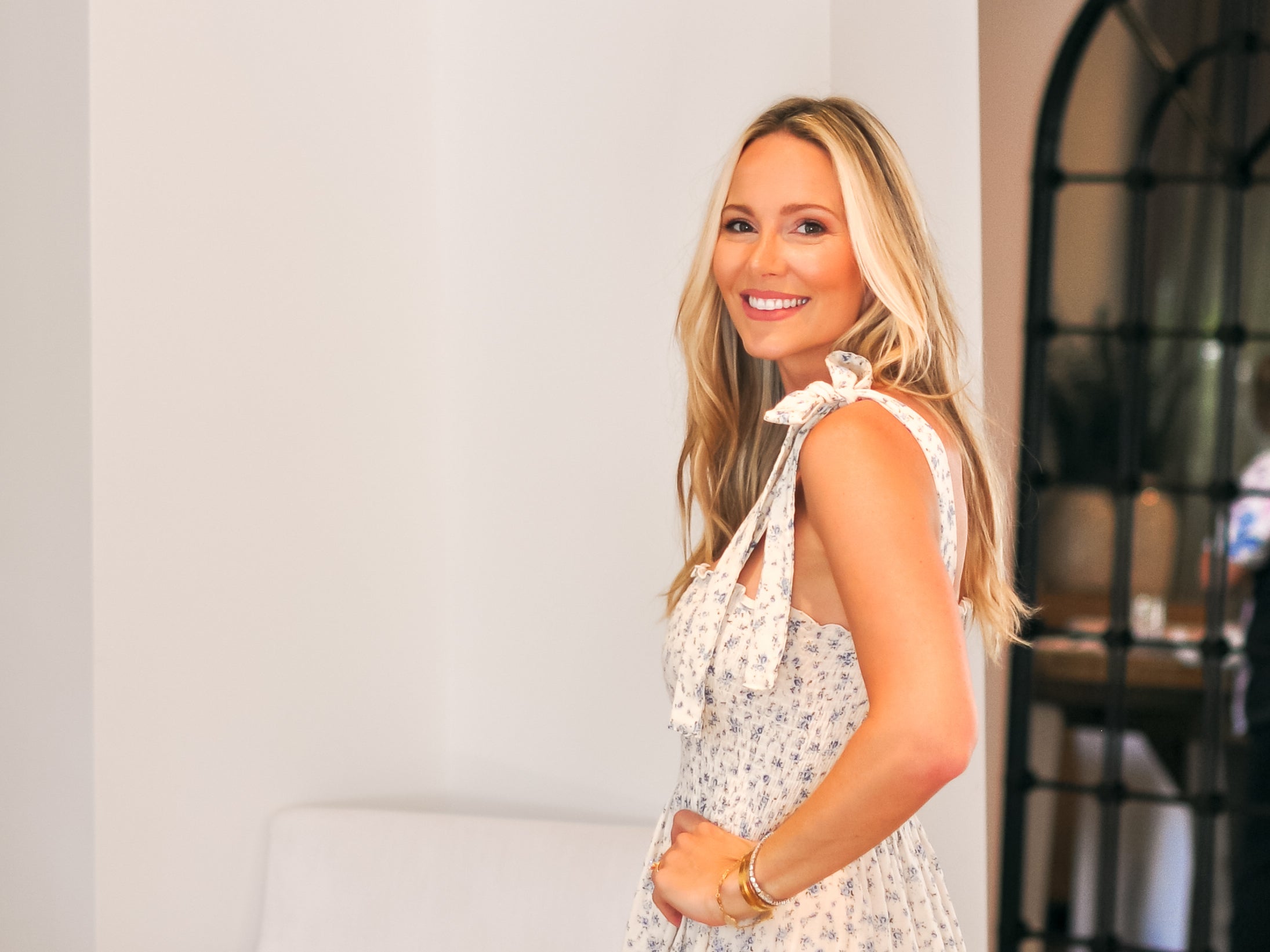A tooth falling out. Sleeping through an important meeting. Leaping off a tall cliff—or, better yet, flying off like a superhero. Countless strange and familiar scenarios play out in dreams within the subtle folds of our subconscious brains, and in one lifetime we’ll spend about 50,000 hours with our eyes aflutter in that intimate world. But, to what end?
As shrouded in mystery as dreams may seem, years of complex research has shed much light on these nebulous mindscapes. For instance, dreams relate closely to our lives and the people in them because they are mainly constructed using our own memories, and they are almost always set in locations that the dreamer recognizes. It all takes place during REM (rapid eye movement) sleep, when our muscles are temporarily paralyzed but our brains are highly active. With cerebral neurons firing full-throttle as if we were awake, the emotional part of our minds intensifies and the reasoning side relaxes, allowing our imaginations to roam free of constraints.
This mental maelstrom is complex and can be emotional, inspiring, frightening, and wild—all the feels. Inventions and artworks aplenty have been inspired by dreams, and hundreds of cultures throughout history have sought to decipher them. Ancient Egyptians (and many others) interpreted them as warnings from the Gods; Plato professed that sleep was a dangerous state in which reason slumbered, allowing the darkest parts of our souls to open up in dreams; and much of 19th-century Europe dismissed them as nothing more than the by-product of indigestion.
Research has come a long way since REM sleep was discovered in 1953, but much of our subconscious world remains evasive. Most people will forget up to 80 per cent of their dreams, while some do not remember their nocturnal events at all. Very generally speaking, light sleepers and those who wake frequently in the night have a higher chance of remembering their dreams, while individuals who sleep soundly are more likely to forget them. Myriad other nighttime experiences, such as sleep paralysis and vivid dreams, are symptoms of sleep disorders (of which there are almost 100 different types).
Mammals, lizards, and birds all experience REM sleep, but when it comes to many other creatures, their experience of dreaming remains a mystery to us. A recent video promoting the PBS TV show Octopus: Making Contact caused a buzz online when it showed an octopus changing colour in her sleep. As she flickered, presumably camouflaging herself in preparation for hunting an imaginary snack, Alaska Pacific University professor David Scheel speculated that she could be in the throes of a dream—especially fascinating because REM sleep has not yet been recorded in octopuses.
In the human realm, to paraphrase the German proverb träume sind schäume (“dreams are froth”), some experts believe that there is no meaning to our nighttime visions, relegating them to the realm of random hallucinations brought on by neurological electrical storms. Others insist that dreams are the very key to our unconscious minds. Dr. Robert Stickgold, an associate professor of psychiatry at Harvard Medical School, has said that the function of dreaming could well be to identify wacky connections that we would never discover while we are awake.
Modern critical theories all take into account the studies of Austrian neurologist Sigmund Freud, Swiss psychiatrist Carl Jung, and Austrian psychotherapist Alfred Adler, who are considered the founding fathers of depth psychology (which differs from all other types of psychology because it takes the subconscious into account). Freud’s 1899 Interpretation of Dreams gave gravity to their psychic significance and symbolism, believing dreams to be the central object of a human’s inner world—revealing past traumas, patterns, hidden desires, and motivations. To Jung, dreams held a teleological function, pulling the individual into the future and into his or her own unique destiny. Adler viewed dreams as problem-solving devices and important tools for us to gain a deeper sense of community engagement.
Psychotherapist Dr. Ana Mozol believes strongly in the shared intelligence of all three. “They all hold an essential piece in understanding,” she explains over the phone from her private practice in Vancouver, B.C. “Their theories were birthed together, and they belong together, but they have travelled in different directions and they have different tenets to them.” With 20-plus years of experience working in the fields of Jungian psychology, clinical psychology, and dreamwork, Mozol does not believe that “dreams are froth”—far from it. Instead, she thinks they are critical in helping us gain a greater understanding of what Jung would call “the other half of life”: the symbolic half.
Through her company Dreamwork Theatre, Mozol helps individuals engage with their dreams through depth analysis (also available in an online course format) in order to reclaim aspects of themselves and their inner worlds, and to break relational and destructive behavioural patterns. While the dream theories of Freud, Jung, and Adler are each a critical aspect of understanding the whole puzzle, Mozol believes there is a missing piece—that which she classifies as the feminine. “In the way I understand it, the feminine is the movement towards deeper mysteries of dreams—things like precognitive dreams [dreams that appear to predict the future], while also dealing with embodiment,” she explains. “It is one thing to have a theoretical understanding of something, and it is entirely another thing to be able to live it and embrace its emotional reality.” Mozol sees this type of work as a move toward embracing real change, whether by actively altering our waking patterns or simply gaining a greater understanding of ourselves. In June 2019, she published a book on the topic called A Re-Visioning of Love: Dark Feminine Rising.
With all of this taken into account, what do we make of very basic symbols that appear to us during slumber? Does typing “dream meaning: teeth falling out” into Google unearth any truth at all, or does it only lead us astray? Most experts, including Mozol, place little weight on those reductionist interpretation-type books because dreams have multiple layers and meanings—never just one. “Dreams do speak in symbols,” Mozol adds, “but the personal association to the dream symbol is always more important than a simplistic collective blanket association.”
In a modern world rife with anxiety and disconnectedness, Mozol believes that great relief can be found by exploring our subconscious realms. “When someone is suffering in their lives, it is neurotic suffering without meaning that is most intolerable. But when someone understands what is going on in their symptoms through their dreams, it can alleviate it,” she says. “Dreams are one of the main ways to gain a glimpse into what’s going on in the unconscious—which is, really, that treasure chest of wisdom that’s just below the surface of awareness.”
It’s a treasure chest that we spend six years of our life digging through—those 50,000 hours add up—so perhaps it’s worth a closer look.












